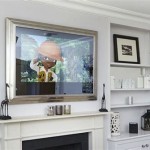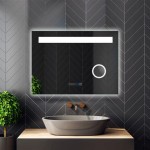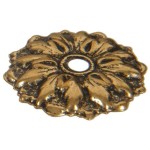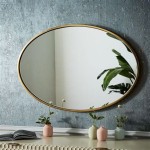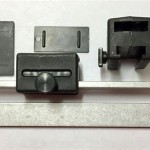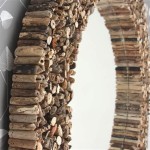How To Make A Mirror Box For Therapy
Mirror therapy utilizes a mirror box to create a reflective illusion, often used in rehabilitation for phantom limb pain, complex regional pain syndrome, and other neurological conditions. Building a mirror box can be accomplished relatively easily with readily available materials. This guide provides step-by-step instructions on constructing one for therapeutic purposes.
Gathering Necessary Materials
Before initiating construction, gathering the necessary materials is crucial. This ensures a smooth and efficient building process. The materials needed are relatively common and easily accessible.
- Cardboard box: A sturdy cardboard box, ideally with a depth of at least 6 inches, provides the main structure.
- Mirror: A mirror large enough to accommodate the affected limb. The mirror's edges should be smooth and safely secured.
- Cutting tool: A sharp utility knife or box cutter is essential for precise cutting of the cardboard.
- Measuring tape/ruler: Accurate measurements are crucial for ensuring the correct placement and size of openings.
- Adhesive: Strong adhesive tape or glue is necessary to secure the mirror and reinforce the box's structure.
- Optional: Non-reflective covering (e.g., black construction paper) can enhance the visual effect by minimizing extraneous reflections.
Preparing the Cardboard Box
Careful preparation of the cardboard box is essential for creating a functional and effective mirror box. Precise cutting and proper dimensioning ensure the mirror fits securely and provides the desired therapeutic effect.
- Select an appropriately sized box, ensuring it is deep enough to allow comfortable placement of the affected limb without touching the mirror.
- One side of the box will house the mirror. Determine the optimal position based on the user's needs.
- Using the measuring tape and cutting tool, carefully cut an opening on the chosen side. This opening should be slightly smaller than the mirror to allow secure placement.
Attaching the Mirror
Securing the mirror firmly within the box is essential for both safety and the effectiveness of the therapy. Proper adhesion prevents movement or displacement during use.
- Carefully place the mirror into the prepared opening, ensuring a snug fit.
- Secure the mirror using strong adhesive tape or glue, applying it to the edges where the mirror contacts the cardboard. Ensure all edges are firmly attached.
- Allow sufficient drying time for the adhesive before proceeding to the next step.
Finishing Touches
Adding finishing touches enhances the functionality and aesthetic appeal of the mirror box. These final steps are crucial for optimizing the therapeutic experience.
- Cover any remaining interior surfaces of the box with non-reflective material (e.g., black construction paper). This helps to minimize distracting reflections and focus attention on the mirrored image.
- Reinforce any weak points or seams of the box with additional adhesive tape. This provides added stability and durability.
- Ensure the box is clean and free of any sharp edges or obstructions that could interfere with therapy.
Using the Mirror Box
Proper usage of the mirror box is critical for achieving therapeutic benefits. Careful positioning and specific movements are key to maximizing the effectiveness of the therapy.
- Place the affected limb inside the box, behind the mirror.
- Position the unaffected limb in front of the mirror, creating a mirrored reflection that appears to replace the affected limb.
- Perform slow, deliberate movements with the unaffected limb, observing the mirrored reflection.
- Focus on the visual illusion created by the mirror, imagining the affected limb moving in the same manner.
Important Considerations
Several important factors should be considered when constructing and using a mirror box for therapy. These considerations are vital for ensuring both safety and efficacy.
- Consult with a healthcare professional: Individuals experiencing limb pain should consult with a healthcare professional or therapist before using a mirror box. Professional guidance ensures the therapy is appropriate for the specific condition and provides instruction on proper usage.
- Safety precautions: Ensure the mirror is securely attached and all edges are smooth to avoid injury. Supervise use, especially in the initial stages.
- Individualized approach: The size and configuration of the mirror box may need adjustments based on the individual’s specific needs and the affected limb.
Maintenance and Care
Proper maintenance and care ensure the longevity and effectiveness of the mirror box. Regular inspection and cleaning maintain optimal functionality and hygiene.
- Regularly inspect the mirror and its attachment to ensure it remains securely fastened.
- Clean the mirror and the interior of the box regularly to maintain hygiene.
- Store the mirror box in a safe and dry location when not in use.

How To Make A Mirror Box
Stroke Wise
Stronger After Stroke Blog The Recovery Diy Mirror Therapy Box

Mirror Therapy Box Diy For 3

Mirror Box Therapy Diy
Stronger After Stroke Blog The Recovery Diy Mirror Therapy Box

How To Make A Mirror Box

Graded Motor Imagery In Hand Therapy Academy

Build A Effective Mirror Therapy Box To Improve Hand Movement After Stroke
Stronger After Stroke Blog The Recovery Diy Mirror Therapy Box

